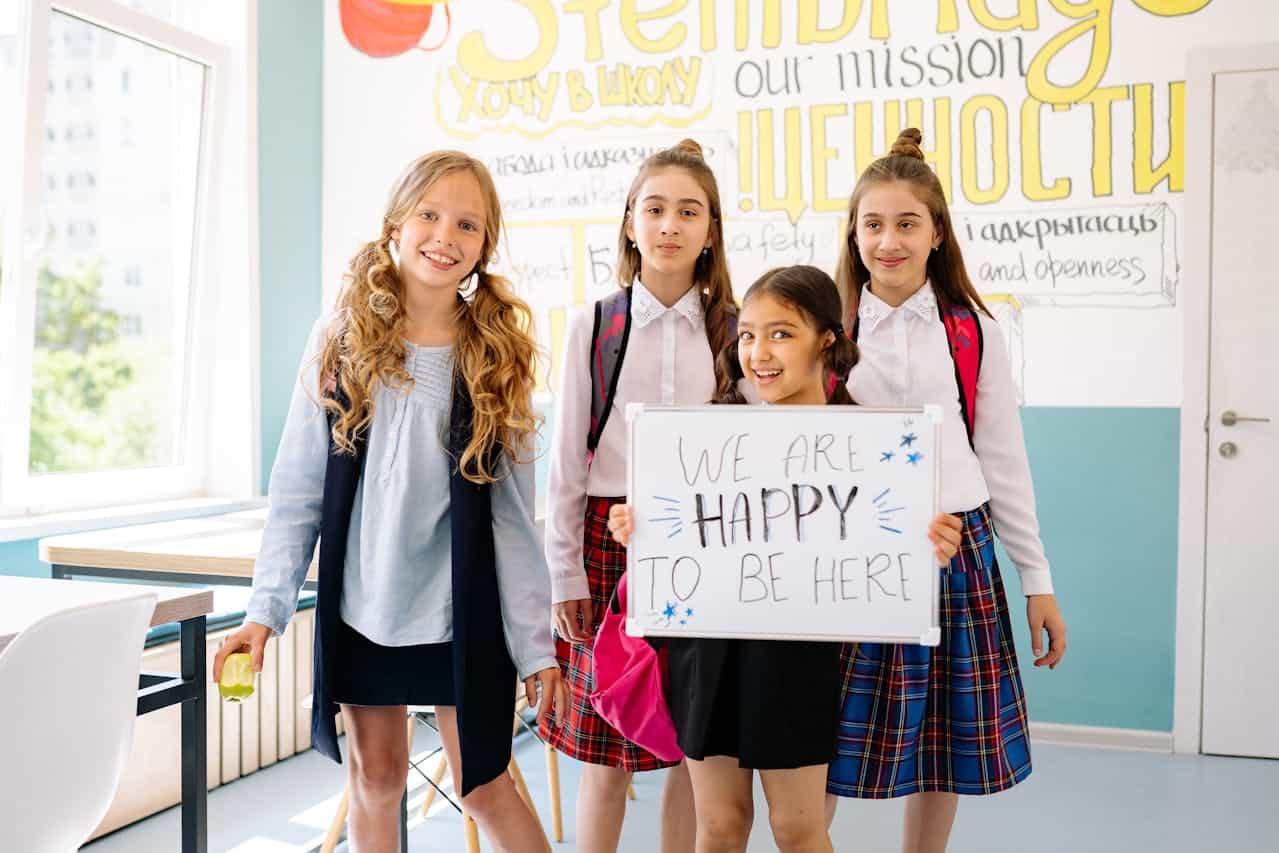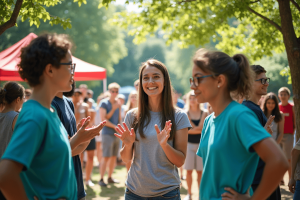
Creating Deaf-Friendly, Inclusive Classrooms This June
- Posted by Cicada Sign
- Categories Blog
- Date June 14, 2025
- Comments 0 comment
June brings a focus on diversity and accessibility with DeafBlind Awareness Month on the calendar. (June 27th marks Helen Keller’s birthday, a symbol of the DeafBlind community.) Educators can use this moment to celebrate Deaf culture and ensure Deaf and hard-of-hearing students feel fully included. As Deaf educator Jeff Bibb urges, we should strive for “an inclusive learning environment…with captioning and American Sign Language” built in. Incorporating Deaf culture into the curriculum and school events connects students to a rich history and community support.
Embrace Deaf Culture and Community
Building community starts with recognizing that Deaf people form a unique cultural-linguistic community. As Deaf historian Kathleen Brockway notes, “if you want to be inclusive, include and recognize the Deaf culture and history in every city, town, place, [and] things you see”. Bring Deaf culture into everyday learning by featuring Deaf artists or poets, teaching about famous Deaf figures, and encouraging cross-cultural projects (for example, exploring Deaf history alongside DeafBlind awareness). Invite Deaf adults and signers into the school – for example, include Deaf teachers, interpreters, or community members in assemblies and clubs – so students see Deaf role models in action. Celebrate students’ multiple identities by promoting events like a school-wide Sign Language Day or Deaf Culture Club during the week. Collaboration with local Deaf organizations (such as inviting a Deaf storyteller or partnering with a Deaf community center) ensures that your classroom is connected to a vibrant community beyond its walls.
Practical Tips for the Classroom
Educators can take concrete steps to make learning spaces Deaf-friendly:
Set high expectations: Maintain the same academic and social expectations for Deaf and hard-of-hearing students as for their hearing peers. Include them fully in class discussions and group work, rather than assuming they need different treatment.
Ensure clear communication: Face your students when speaking and provide good lighting so they can see your mouth and face (essential for lipreading). Minimize background noise when possible. When speaking, identify the speaker (“That was Sam asking a question”) and repeat or paraphrase classmates’ comments to keep everyone informed.
Use visual supports: Provide written and visual materials (slides, diagrams, written summaries) to reinforce spoken content. As Clerc Center guidance suggests, “create visual supports such as graphics, charts… and allow time to view information”. Caption any videos shown in class.
Accessible technology: Use captioned media and encourage real-time captioning tools (for instance, apps like Ava for speech-to-text). Provide note-taking supports such as Shared Notetaking or an assistive listening system. Setting up a central notetaking system helps Deaf students follow along without relying solely on lipreading.
Inclusive seating: Arrange seats so Deaf students can see as many faces as possible (a U-shaped or semicircle layout is ideal). This improves visibility of teachers, interpreters, and peers.
Sign language and interpreters: If possible, teach basic ASL signs to the class to build empathy. Ensure qualified interpreters are scheduled for lectures and events. Offer ASL clubs or courses for all students – this not only benefits Deaf students socially (one student noted ASL classes gave “more people to talk with”) but also fosters a more inclusive peer community.
Family and peer collaboration: Involve Deaf students’ families and local Deaf mentors as part of the learning team. Invite Deaf students to participate in planning clubs, events, and field trips. As one school project found, including Deaf individuals in leadership (e.g. leading a club or serving on a student council) greatly increases a sense of belonging.
“Everyone was dancing in groups and I didn’t know which to join… So I just left.”
This comment from a Deaf high school student highlights how easily social events can feel exclusionary. The student arrived at a school dance excited to join in but, seeing classmates clustered together, felt unsure where to go and left early. These real experiences remind us that inclusion isn’t only about academics. Simple adjustments—like having an ASL-using peer buddy at events, interpreting announcements, or hosting social activities geared toward Deaf students (such as a sign-language movie night or Deaf culture fair)—can turn isolation into opportunity. In this case, a teacher or counselor could work with students to form welcoming groups or Deaf-friendly extracurriculars so no one “just leaves” feeling left out.
Empower Your Students
Creating a Deaf-friendly classroom is a team effort. Start by reflecting: How can your school calendar and curricula weave in Deaf culture and accessibility? Attend a local Deaf community event this month (like a DeafBlind Awareness walk or ASL workshop) to learn and show support. Try implementing one new tip from above: arrange seating differently, caption an upcoming video, or set up a notetaking buddy system. Reach out to Deaf colleagues or organizations for guidance—collaborating with experts and with Deaf peers truly enriches learning for everyone.
As educators, we hold the key to inclusive change. This June, let’s pledge to make our classrooms places where every Deaf and hard-of-hearing student sees themselves valued, hears their ideas represented (visually or through signed language), and thrives alongside their classmates. When we learn ASL, adapt our teaching, and celebrate Deaf culture together, we build not just better schools, but stronger communities. Take action today: connect with your local Deaf community, adopt an accessibility strategy in your classroom, and help your students sign and shine.
References
The Learning Center for the Deaf – Awareness Calendar (June) tlcdeaf.org.
Wisconsin Council of the Blind & Visually Impaired – “DeafBlind Awareness Month Recognizes an Often ‘Invisible Population’” (June 12, 2024) wcblind.org.
National Geographic Education Blog – “5 Deaf Educators Share Inclusivity Tips to Embrace in Your Classroom” (Sept. 21, 2020) blog.education.nationalgeographic.org.
Gallaudet University Clerc Center – “Accommodating Deaf and Hard of Hearing Students in Schools” (Tips to Go, 2015) clerccenter.gallaudet.edu.
National Deaf Center – “Foster Belonging for Deaf Students on Your Campus” nationaldeafcenter.orgnationaldeafcenter.org.
ESC of Central Ohio – “Through Their Eyes: Deaf Students Reflect on the High School Experience” (ESC Connect blog) escco.orgescco.org.

J Letter in ASL
“Everyone was dancing in groups and I didn’t know which to join… So I just left.” A comment from a Deaf high school student highlights how easily social events can feel exclusionary.

“Sometimes teachers talk while writing on the board, and I miss everything. It feels like I’m expected to be in two places at once.” — Deaf student reflection from a high school inclusion survey



